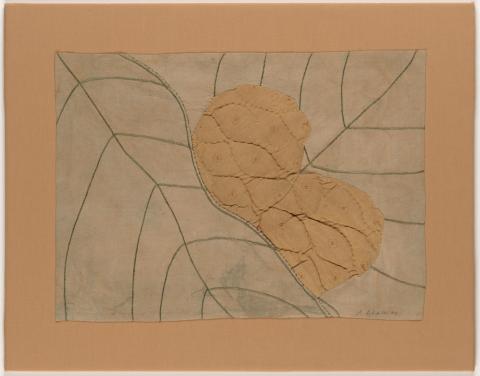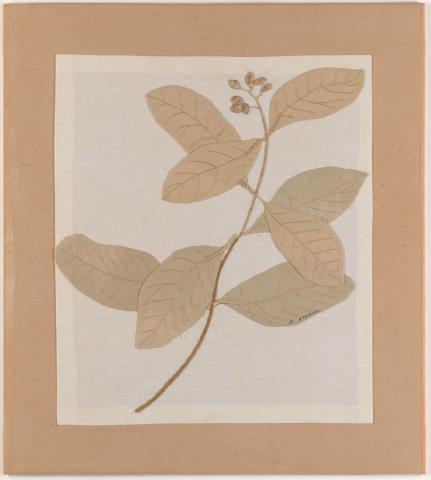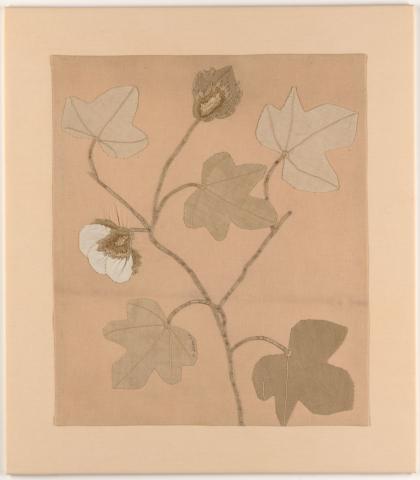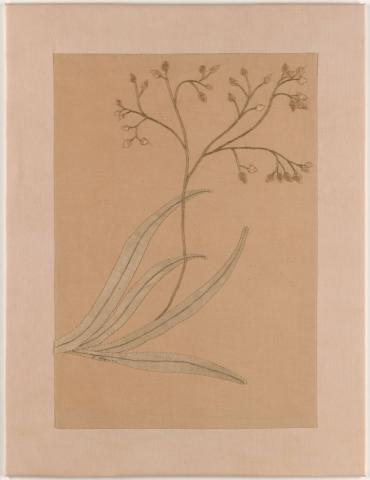EXPANDED LABEL: 'The colors of Hawai‘i‘' series
By Ruth McDougall
‘sis’ August 2023
Deeply informed by her Hawaiian heritage, Bernice Akamine explores a range of environmental and cultural issues in her practice. Chief among these is her people’s ongoing struggle for sovereignty over their ancestral lands, and the devastating effects of plantation culture, militarism and tourism on the earth, air and waters of Hawai‘i.
Drawing on her expertise as a kumu (teacher) in waiho‘olu‘u (Hawaiian natural dyes), her embroidery series documents seven native Hawaiian plants traditionally used by Kanaka ‘Ōiwi (Native Hawaiians) to make kapa (barkcloth). The work emerged from Akamine’s 2005 internship at the Amy BH Greenwell Ethnobotanical Garden, on the Big Island of Hawai‘i, where the artist was asked to produce a book of 20 dye samples to pair with photographs of the corresponding plants.
In her embroideries, the artist draws on her deep knowledge of the plants and their dyes to create closely cropped compositions that evoke each plant’s character. These include the lyrical, long, thin stems and delicate petals of the uki uki plant (Dianella sandwicensis), the voluptuous noni fruit (Morinda citrifolia), and the broad expanse of the majestic taro leaf (Colocasia esculenta). The artist combines soft muted greens and creams with brighter oranges and yellows to demonstrate a rich spectrum of colour.
Bernice Akamine’s evocative botanical portraits recall a history of women’s still-life painting. They also highlight how Kanaka ‘Ōiwi women have embraced new techniques — embroidery and quilting — and combined them with traditional knowledge to create works that remain deeply connected to culture and place.






